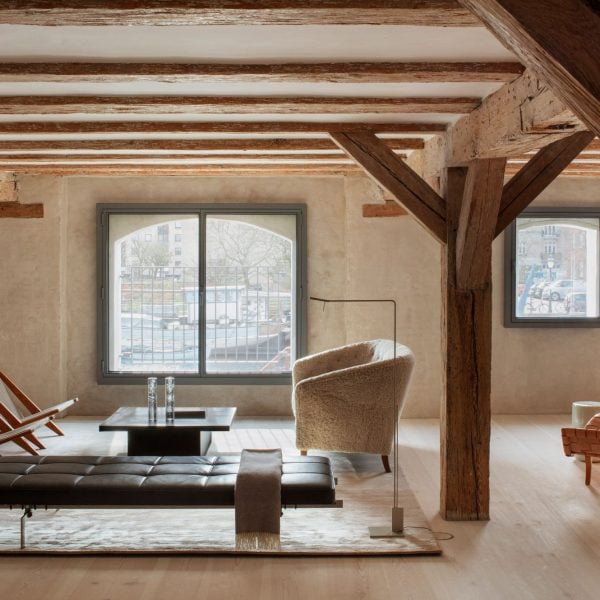Danish designer David Thulstrup has renovated a 218-year-old canal-side warehouse in Copenhagen to create four apartments defined by “quiet luxury”.
Named Strandgade, the warehouse was one of several on the Christianshavn canal originally used to store goods, with this one specifically built with floors for animal hides to be hung to dry.
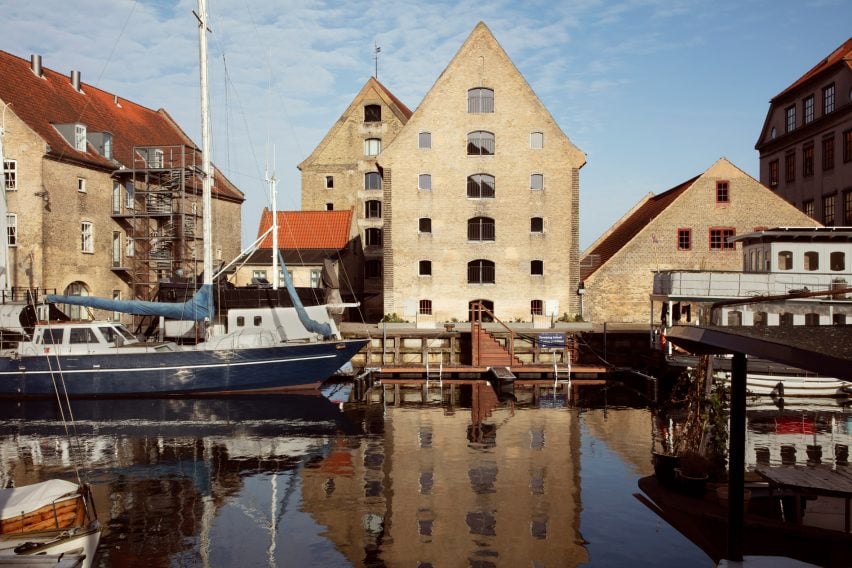
Thulstrup applied a natural material palette throughout the renovation of the heritage-listed site, responding to the building‘s industrial history by highlighting its original features.
Large structural pine beams that hold up the floors were stripped by hand to remove chalk, acrylic paint and resin.
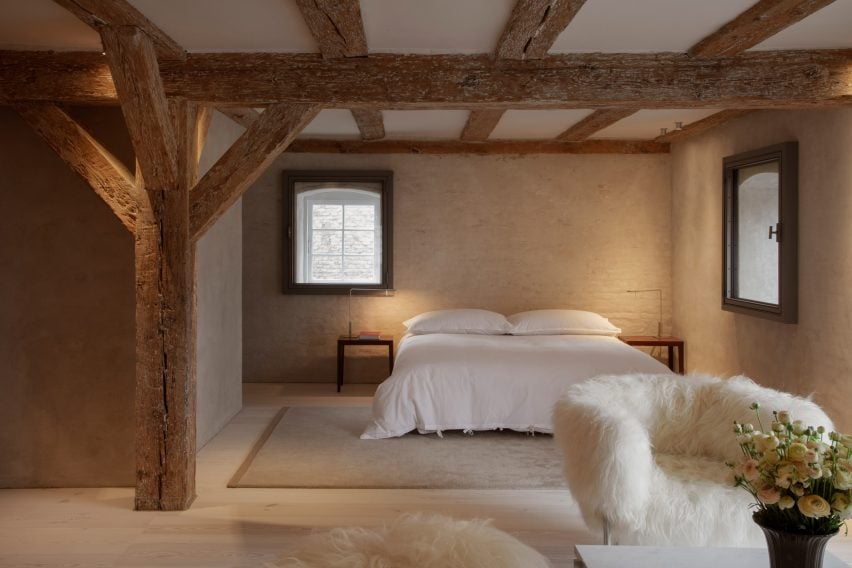
“The quality of the original beam structures was so high that they were preserved – decades of paint was removed with soap to reveal the beautiful wood underneath,” Thulstrup told Dezeen.
I wanted to reveal the beauty of it all, using a small palette of original materials out of respect for the building, such as rendered walls, simple pine planks and Finnish stone,” said Thulstrup. “Everything relates to the historical building.”

In keeping with the beams, Dinesen Douglas pine planks were used for the floors, which were laid in varying widths of 15, 20 and 25 centimetres – in line with the heritage requirements.
Thulstrup explained that the floors were finished in white to add lightness to the space, intended to offset the height limitations of the ceilings.
Layers of new additions were stripped back to reveal the building’s structural brick walls, which were internally rendered in clay.
“Having the render, or ‘puds’ in Danish, on all the surfaces was important – it’s a natural breathable clay made of Danish chalk and sand, and the only one we are allowed to use in protected buildings in Denmark,” said Thulstrup.

Due to the heritage-listed status of the building, restrictions were in place that limited changes to the floor plan, meaning no new walls could be added.
Working on a transformation like this and collaborating with the Agency for Culture and Places in Denmark involves accepting the challenges of restraint and practicing a deep restraint for the building and its history,” stated Thulstrup.
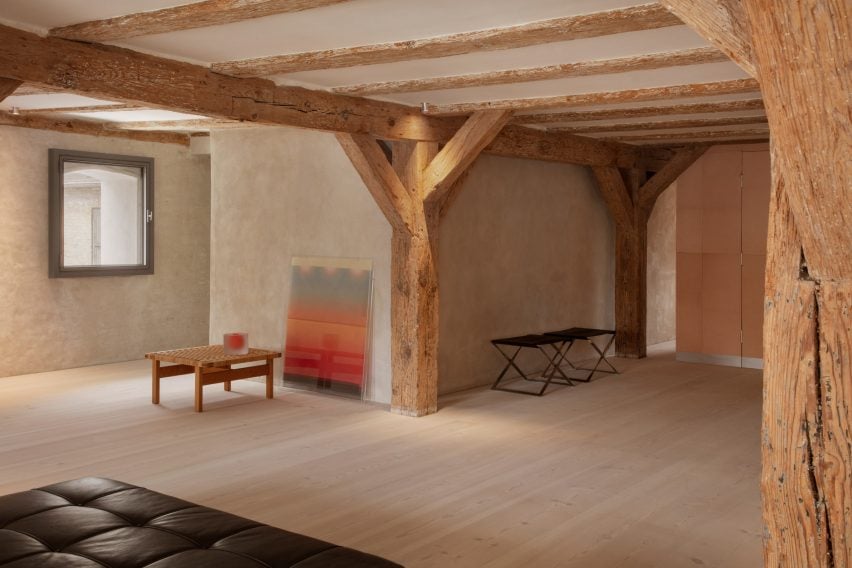
Each of the 220-square-metre apartments has an open-plan layout, with two central cubes incorporated – one housing a stairwell and the other for fitted kitchens and bathrooms.
Meanwhile, a lift clad in Sorensen leather as a nod to the history of the building as a former hide warehouse, was also added.
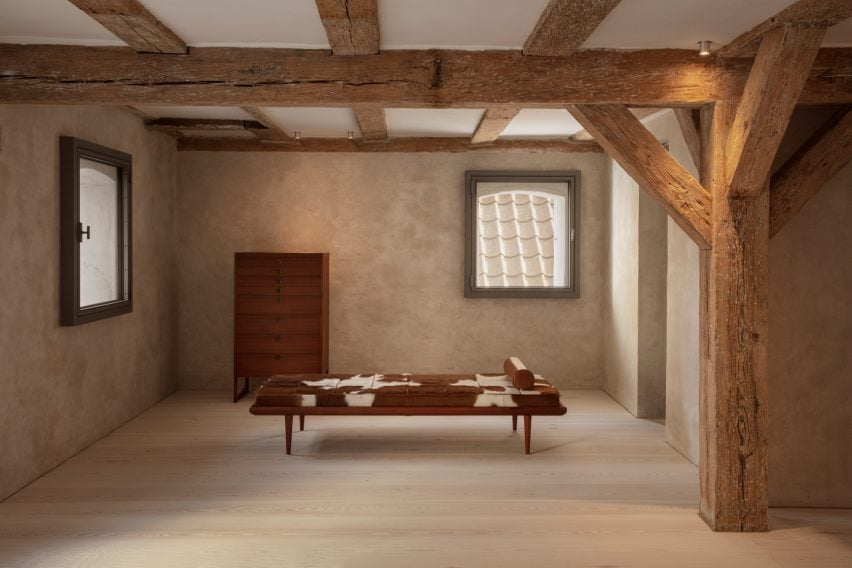
Elsewhere, the colour scheme and interior finishes were designed to play into the building’s previous use, with a tan and white cow-print daybed incorporated alongside leather seating and chairs upholstered in fluffy white material.
Subtle elements were added to blend in with the scheme, such as windows finished in steel-painted graphite grey and custom aluminium lights.
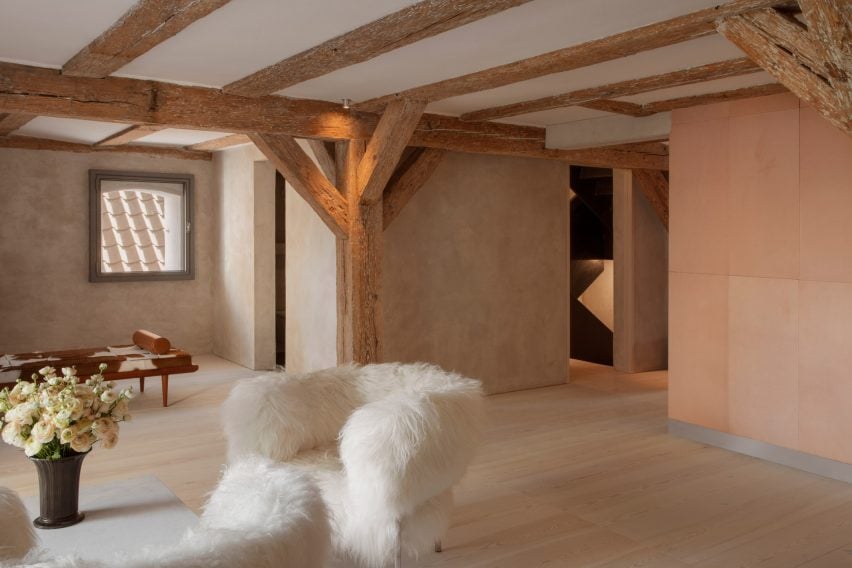
“Overall, there are earthy hues of ochre and orange, along with light grey tones and pale woods, in contrast to the blue skies and the changing colours of the Christianshavns canal,” said Thulstrup.
“All the choices I made were about exclusivity and quiet luxury on this very special canal-side site.”
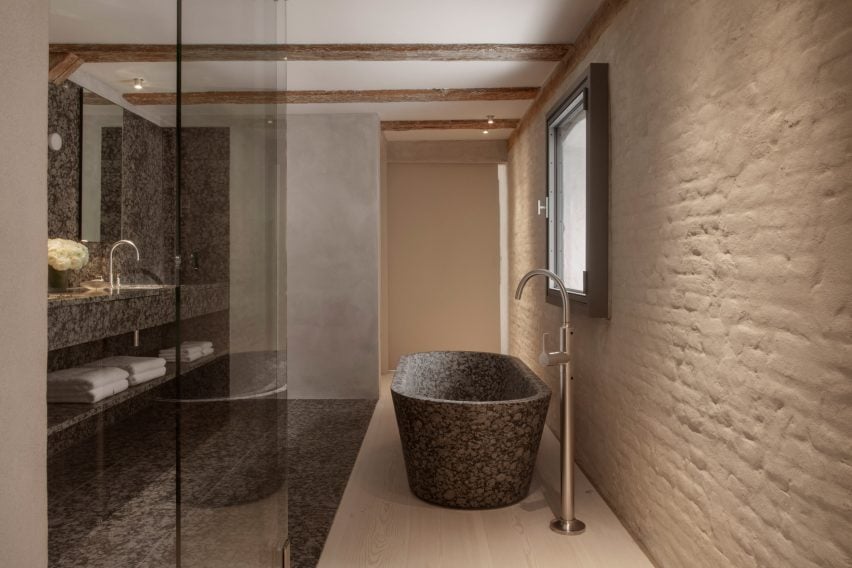
Baltic brown granite discovered as a load-bearing foundation in the original building was repurposed and used to clad the bathroom walls and fittings, while freestanding baths were also made from blocks of the stone.
“It was about elevating everything – we could have chosen a standard bath but making it from one solid block of the same stone from the original building connects it directly to the history as well as being a luxurious contemporary insertion,” Thulstrup stated.
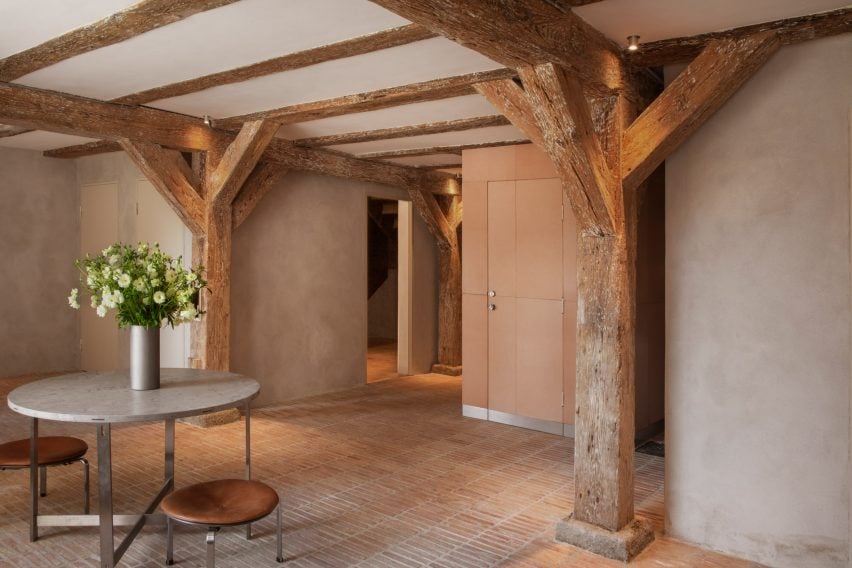
On the ground floor, common space for residents was created, with a kitchenette and large dining table, wine rooms, a sauna and storage space.
Comprised of narrow red bricks, the floors continue from the inside to outdoor spaces. A courtyard with an outdoor shower was intended for use after swimming in the harbour, while there’s also a berth for a small boat.
Other warehouse conversions featured on Dezeen include a Porto warehouse transformed into a “house of many faces” by Fala Atelier and an east London warehouse conversion by Sudio McW for climate activists and filmmakers Jack Harries and Alice Aedy.
Photography is by Irina Boersma César Machado.

